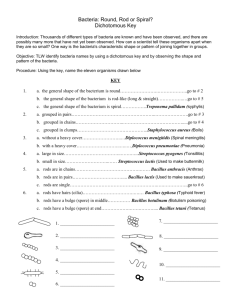
If you do not have growth, reincubate your plates and subculture the original broth again. MACCONKEY AGAR AFTER INCUBATION-Observe your MacConkey Agar plate and determine if your organism ferments lactose (or not) and record your results on the laboratory report form that you will submit for grading. These tubes will be saved in the refrigerator in case your unknowns do not grow on the CNA or MacConkey agar plates. Label your mixed unknown broth with your name and lab section (day & time). Incubate your CNA plate upside down in a candle jar since some of the unknown Gram-Positive organisms are microaerophilic.ġ1. Stabbing into the media will enhance the appearance of hemolysis.ġ0. Stab the sterilized loop 2–3 times into the agar in the first section of the streak plate. Use an inoculating loop to complete the rest of the procedure.ĩ. Dispose of the swab in the autoclave bag.Ħ.

Lift one side of the lid of the CNA plate up just enough to fit the swab in, swab the inoculum onto the largest section of the agar.ĥ. Incubate your MacConkey agar plate upside down in the class plate tray until the next lab period. Replace the Petri Plate lid and sterilize the loop in the Bacticinerator.ĩ. Lightly drag the tip of the loop from side to side in a back-and-forth motion to spread the inoculum to fill the third section. Place the sterilized loop in the center of the second section and gently drag the loop one time into the third section. Lift the lid of the Petri plate up just enough to fit the loop in. Replace the lid and sterilize the loop in the Bacticinerator.Ĩ. Lightly drag the tip of the loop from side to side in a back-and-forth motion to spread the inoculum to fill the second section. Place the sterilized loop in the center of the first section and gently drag the loop one time into the second section. Sterilize your inoculating loop in the Bacticinerator and allow it to cool thoroughly.ħ. Use an inoculating loop to complete the rest of the procedure.Ħ. Dispose of the swab in the autoclave bag.ĥ. Lift one side of the lid of the MacConkey plate up just enough to fit the swab in, swab the inoculum onto the largest section of the agar. Recap the mixed unknown broth culture tube and place it in a test tube rack.Ĥ. Put the cotton end of the swab into the broth and then slightly press the swab against the inside of the tube to expel any excess broth.ģ. Remove the cap of the mixed unknown broth culture with your little finger. Handle ONLY the wooden end of the swab to maintain the sterility of the cotton end.Ģ. Peel the paper cover from the wooden end of a sterile swab. Streak Plate Technique macconkey agar streak plateġ. Resuspend the mixed unknown broth culture by gently shaking or tapping the tube side to side until the bacteria swirl up from the bottom of the tube. Record the identification of the unknown using correct binomial nomenclature. Record the biochemical tests you perform in the order of your dichotomous key. You must complete the tests in the order of the dichotomous key until you reach an identification of your unknowns. The result of the first test will determine the next test to perform. By using biochemical test charts to differentiate the Gram-positive cocci and the Gram-negative bacilli, you will design two dichotomous keys (flow charts) to guide you in determining which tests will help you identify your unknowns. Once the bacteria have been isolated from each other, the next step is to identify both bacteria. You can determine the hemolytic properties of the Gram-positive cocci. CNA is differential because it contains red blood cells. CNA contains the antibiotics colistin and naladixic acid which suppress the growth of Gram-negative organisms. The Colistin-Naladixic Agar is selective for Gram-positive organisms. Gram-negative bacilli that ferment lactose will appear hot pink and those that do not ferment lactose will appear colorless. MacConkey agar is also a differential media because it contains lactose.

The crystal violet dye and the bile salts in the media inhibit the growth of Gram-positive organisms. The MacConkey Agar is selective for Gram-negative organisms. First, you must isolate and separate the two organisms from each other by using selective media. One type is Gram-positive cocci and the other is Gram-negative bacilli.

There are two different types of bacteria in the broth of the mixed unknown. Shigella flexneri Streptococcus sanguinis Salmonella enterica Streptococcus pneumoniae

Klebsiella pneumoniae Streptococcus pyogenes Pseudomonas aeruginosa Staphylococcus aureusĪlcaligenes faecalis Staphylococcus epidermidis Possible Gram-negative unknowns: Possible Gram-positive unknowns


 0 kommentar(er)
0 kommentar(er)
